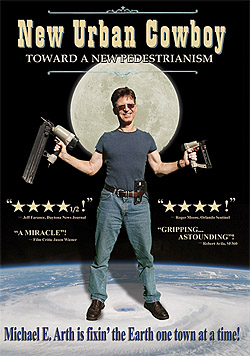
|
||
|
Issue 50 |
|
20 May 2008 |
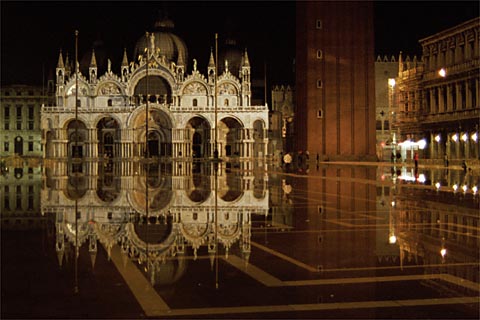 Aqua Alta, Venice ©2001 J.Crawford Announcements
Golden AnniversaryThis is the 50th issue of Carfree Times. We'll mark the occasion by. . . doing nothing special. The champagne will flow when we break ground on the first new carfree city. That will be something to celebrate.Carfree Design ManualThe publisher wants the entire book in color. I had not expected this, but who would I be to disagree? The last of the text is out for final proof-reading. We should be on press late in the summer or this fall.Carfree Cities AvailabilityBoth the paperback and hardcover editions of Carfree Cities are widely available. The hardcover edition is nearly sold out, so if you want one, buy now!Support for Carfree.comCarfree Friends (Netherlands) paid for February and March. Tour d'Afrique Ltd. paid for April and May.The crisis has now passed and I am again able to support the server without outside help. I wish to thank the contributors who kept us on line for the past four years. Their names will remain on line indefinitely. ThanksThanks to the many stringers who have forwarded stories to Carfree Times. I've stopped naming people for fear of slighting someone by overlooking a name.
Carfree.com supports World Carfree Network (WCN) by posting the most important network announcements here. Visit the
WCN web site for full information regarding the Network's activities.
|
|
 Óbidos, Portugal ©2006 J.Crawford The Best Photographs from the First 50 IssuesBy way of recollection, the best photographs from our first eleven years are scattered throughout this issue.
News Bits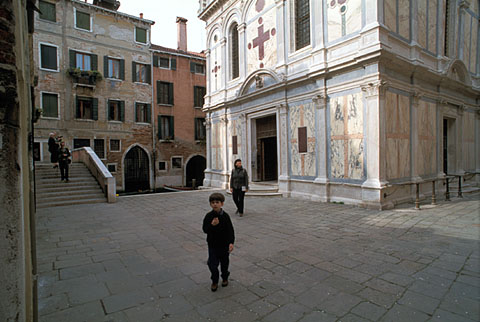 Venice ©2001 J.Crawford Kid HeroAnna Talman is one tough customer. This is especially true when you know that she's only ten years old. She was one of just three children in Canada to win a Sunlight Eco-Action Kids Award. Her cause: idling cars.She comes from a carfree family. She started Eco-Air last year, and the movement quickly spread to seven other local schools. The group seeks an anti-idling by-law to stop drivers from idling their vehicles near schools. We're leaving our kids an awful mess. It's good to see that they're getting an early start on cleaning it up. Maybe we could do our part, too.
"Young anti-idling crusader wins green award"  Venice ©2001 J.Crawford Expensive Gas Drives Down Suburban Housing ValuesBuy a McMansion? Bad idea. But they are cheap. And probably getting cheaper. Housing prices are probably nowhere near their bottom. (There's a scary thought.) But some neighborhoods are holding value. And it's no surprise which neighborhoods. It's the ones that aren't 40 miles from work.Gas prices have finally put the brakes on suburban sprawl. Take Washington, DC. Prices fell ("tumbled" in the source for this story) 11% in the past year. But in Ashburn, about 40 miles from downtown, prices fell 18%. In that area, new construction has essentially stopped. But it's worse than the numbers first suggest. Brick townhouses that sold for $550,000 at the peak are selling for about $350,000. Half of that development has either been foreclosed or is facing foreclosure. A recent foreclosure auction in the Maryland suburbs found few takers for dwellings far from downtown. Near the city center, people are still buying and new listings attract plenty of interest. In the city proper, prices are actually up 3.5% over the past year. Good access to public transport is especially important to buyers. Simply put, the longer the commute, the steeper the drop in prices.
"Home Prices Drop Most in Areas with Long Commute" 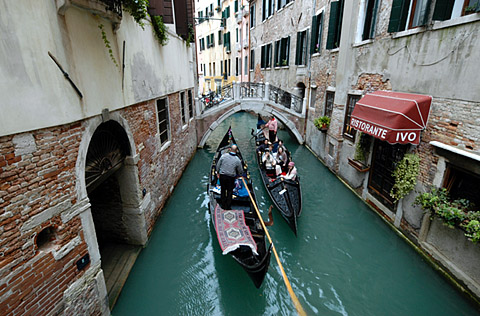 Venice ©2005 J.Crawford The Sacred-Cow TaxDrivers in metropolitan Los Angeles my soon be paying more to drive. It would not be a lot of money - either an extra nine cents/gallon or $90/year. What is significant is that this "Draconian" measure is under serious consideration in LA, where the car began its city-transforming American journey. The details are complex and probably not interesting to most readers; see the full article if you are one of the few. But this really marks the end of an era.
"Driver fee would help fight warming 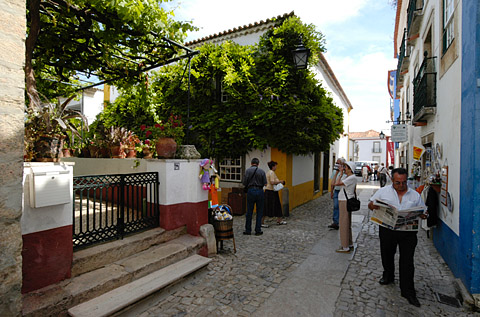 Óbidos, Portugal ©2006 J.Crawford Enough Cars!The Union of Quebec Municipalities (Montréal is not a member) is getting serious about the car problem. A new policy document paints a grim picture of the place of cars in the province's cities and proposes to adopt many practices that have succeeded elsewhere in taming the car. Total annual vehicle miles traveled has doubled in 22 years. "The cities are suffocating." The goal is "the development of a new culture of mobility and transport" and a "reduction of car dependence" in the province.New tools are being adopted, including a maximum size for supermarkets, requiring businesses to subsidize public transport, priority for public transport, congestion pricing, parking reductions, street narrowing, and new pedestrian zones. The express intent is to reduce the monopoly of the car on city streets. The report contends that it is "unthinkable and not desirable to do away with cars," but holds that the car must be considered "as a mode of transport adapted to certain situations, not all." Public transport and the rearrangement of cities are considered essential to achieve this goal. The paper recommends that elected officials stop "favoring the car over other modes" and offer interesting alternatives. Also envisioned is a shift of freight from road to rail and water.
"Les villes en ont assez de l'automobile" 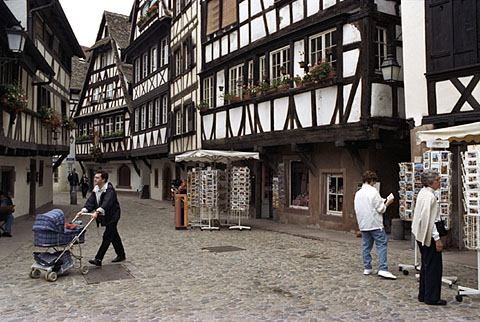 Strasbourg ©1997 J.Crawford Stringent Carfree Test in Marburg a SuccessMarburg, an old German university town, ran a three-month field test during which the "Oberstadt" (upper town) was made carfree on Saturdays between 10 AM and 2 PM. After the test period, the mayor asked local residents and businesses for their opinions. The response was quite positive.During Saturdays, only vehicles of handicapped persons, taxis, and buses are allowed to move in the "Oberstadt." Even residents are not allowed to drive in the quarter during the four carfree hours. The city council has now made these changes permanent. The Green party, part of the governing coalition, would like to extend the duration of carfree period.
"Verkehrsversuch in der Oberstadt ist ein Erfolg" 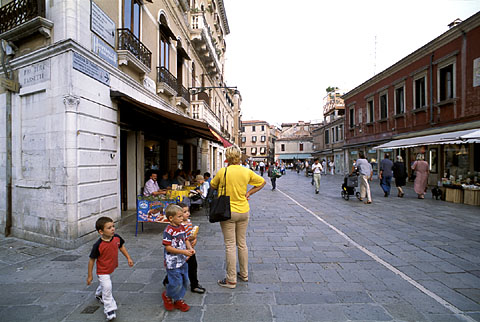 Venice ©2002 J.Crawford A High-Rise Future for Sydney?Six architectural firms gave their view of the Sydney to come. Most see Sydney trading its sprawling, car-clogged suburbs for a carfree, transit-focused urban form by 2050. The architects see no other way to tackle rising emissions and climate change. Their vision is largely based on skyscrapers, alas.I see no need for the skyscrapers. People need to realize just how much land becomes available when we move our transit systems onto rails and put them below ground. A vast amount of street space is freed up for new uses, and four-story buildings are adequate in almost any situation except Manhattan and Hong Kong. "Common to many submissions is a radical rethink of our current transport infrastructure away from the domination of the private automobile to more shared and sustainable systems," said the exhibition's creative director.
"Sydney 2050: high-rise and car-free"  Parma ©1998 J.Crawford New York Congestion Pricing Plan Stuck. Now What?New York Mayor Bloombergís London-style congestion-pricing proposal got the axe in the New York State Legislature. (Why should they be the ones to decide anyway?) Transportation advocates are now busy borrowing ideas from Paris, where mayor Bertrand Delanoë was elected in 2001. He had campaigned on a platform of more "civilized space" and promised to "fight with all the means at my disposal against the harmful, ever-increasing, and unacceptable hegemony of the automobile." (Stern words, indeed!)He was the author of the hugely successful Paris Plage, which converted a Seine-side highway into a beach for the summer. The beach has become a fixture and attracts 4 million visitors each summer. Delanoë got rid of on-street parking in order to provide space for a new bus network with real-time bus arrival information. Cars are not allowed to interfere with bus operations. Bikes also got dedicated lanes. Last summer, Paris launched its bike-sharing system. Paul Steely White of Transportation Alternatives says, "Now, itís all about taking pavement away from automobiles and reallocating it to more efficient modes." More bike lanes are in the works. Dedicated bus lanes may be implemented. The city is even considering some carfree streets for this summer despite strong opposition in some cases. Best of all: the meddling, conservative, anti-city New York State legislature does not have the authority to interfere with these plans. So there!
"If We Canít Be London. . . 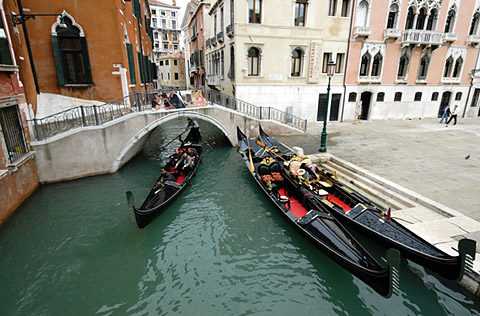 Venice ©2005 J.Crawford Commuter's ProgressWhy do people in New York City drive to work? By US standards, the public transport system is exceptional. Even by Swiss standards it's not bad. It goes almost everywhere, much of it runs all night, and for many trips it's faster than driving. This notwithstanding, there are an estimated 810,000 daily vehicle trips into and below Midtown Manhattan. Driving is very expensive, traffic is awful, parking is difficult or expensive or both. So what keeps people in their cars?It's a mix of things. Parents of small children find the car much easier. (The long stairs into most subway stations are a major barrier to baby buggies.) You can listen to your own music, as loud as you want. There are no crowded subway platforms or long waits in the cold for a bus. You're guaranteed a seat (and a plush one if you buy a luxury car). Although 1.74 million cars are registered in the city, most New Yorkers use public transport. But hard-core drivers will be tough to lure out of their cars. Some 80% of the people who drive into Manhattan have access to public transport that would take no more than 15 minutes longer. A poll conducted for the Partnership for New York City (which supported the congestion-charging scheme) found that most of those who drive do so by choice, not by necessity. The conclusion: the only way to reduce vehicle trips is to charge a heavy fee. There was one very scary note: many people said they drove because they could "avoid dealing with other people." When your citizens become phobic with respect to public contact, your civilization is in deep trouble. There are two lessons here. Public transport services have to be exceptionally good to lure people out of their cars (unless the cost of driving becomes exorbitant). We know how to do this. The problem is that public transport is a public service, and the English-speaking world largely regards public services as only for those who can't afford better. We have to change this fundamental mindset. It won't be easy. And we have to find out why so many Americans don't seem to like their fellow citizens.
"Faster, Maybe. Cheaper, No. But Driving Has Its Fans." 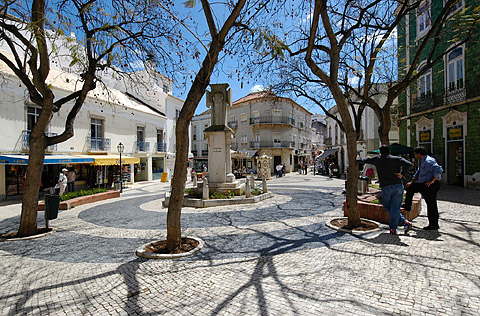 Lagos, Portugal ©2005 J.Crawford Wildlife Disruptions on a Global ScaleA new study shows broad impacts of global warming on wildlife. The problem is here now. At least 90% of environmental damage and disruption worldwide could be explained by anthropogenic warming.Antarctic penguin populations are falling, African lakes have fewer fish, American river flows are changing, plants are blooming earlier, and European bird migratory patterns have changed. This is the first time that climate change has been formally linked to dramatic changes in the world's wildlife. The study, in Nature, analyzed reports on population or behavior changes in 28,800 plant and animal species. Additional reports on other environmental effects were also consulted. Natural variations were taken into account when assessing the impact of climate change. In 90% of the cases, the changes could be explained only by global warming.
"We're getting a sense that climate change is already changing the way the world works," said lead author Cynthia Rosenzweig of NASA's Goddard Institute. "When you look at a map of the world and see where these changes are already happening, and how many species and systems are already responding to climate change after only a 0.6C rise, it just heightens our concerns for the future," she said. Perhaps the biggest concern is "knock-on effects," where melting Antarctic ice has caused an 85% fall in krill population. The population of Emperor penguins, which feed on krill, fell by 50% during one warm winter. Warmer weather in Europe causes trees to leaf earlier, which raises leaf-eating grub populations sooner in the year. Blue tits, which feed on grubs, have adapted to the shift by giving birth to their young two weeks earlier.
"World's wildlife and environment already hit by climate change, major study shows"  Lisbon ©2002 J.Crawford Pollution Affects Brain FunctionNanoparticles emitted from internal combustion engines are now thought to affect brain function. When inhaled, these minute particles find their way to the brain, where they affect how we think. A team of Dutch researchers at Zuyd Universiteit found volunteers willing to sit for an hour in a room that was filled either with clean air or diesel exhaust. Their brains were monitored by EEG during the test and for an hour afterwards.The brains of those exposed to nanoparticles exhibited a stress response, which continued after the exposure to pollutants had ceased. There were clear indications of changes in brain function. A study of dogs discovered that those who lived in highly-polluted Mexico City had brain lesions similar to those found in Alzheimer's patients. Dogs in less-polluted rural areas showed a much lower rate of brain damage.
"Pollution 'alters brain function'" 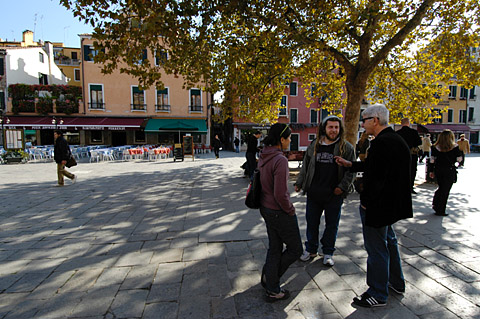 Venice ©2005 J.Crawford Noise and Your HeartTransport-related noise causes 50,000 fatal heart attacks a year among Europeans. A further 200,000 cases of cardio-vascular disease also result. The report comes just as the European Commission (EC) is preparing to act against several member states for failing to meet noise limits established six years ago. Tire-noise legislation is now years behind schedule but is expected this summer.Policy maker Nina Renshaw said, "This research shows that the lack of decent regulation combined with increased traffic and a trend towards bigger, more powerful, and noisier vehicles is literally proving to be a lethal combination for Europeans. Unlike air pollution, which most major European cities are now starting to tackle, noise has been ignored for decades as the problem has worsened and the negative impacts on society have increased." Noise pollution, an EU concern for 30 years, has continued to worsen. The study found that 210 million EU citizens are regularly exposed to 55 dB (the EU maximum) or more of road noise and 35 million to excessive rail noise. The estimated costs to society, including health care, are at least € 40 billion/year. Children exposed to noise suffer from difficulties with concentration, attention span, memory, reading, and general school performance. Poor people suffer disproportionately because housing in quiet areas is more expensive. The study recommends that the EU reduce tire noise to an effective level of 71 dB by 2012, with a further reduction by 2016. The EU should also take back responsibility for limiting vehicle noise from the UN Economic Commission for Europe, which has failed to act. A European noise standard for road surfaces was also recommended. I can attest from observations in Rio Seco, Spain, that the best surfaces are dramatically quieter than conventional paving.
"50,000 heart deaths a year caused by traffic noise" |
|
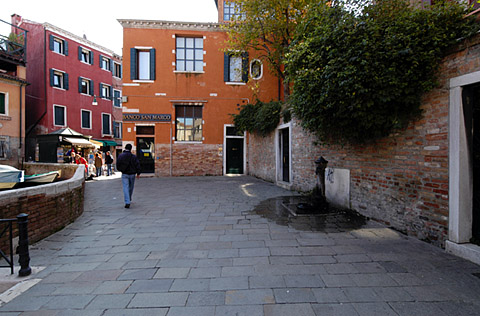 Venice ©2005 J.Crawford Insane NoiseIf you think the noise near you is bad, don't go to Cairo. This teeming city of 18 million people may be the noisiest on Earth. The standard rule for driving is: one-hand-on-the-horn. That hand is held down."Whenever I talk to people, they always say, 'Why are you screaming?'" screamed Salah Abdul Hamid, a barber on the corner of a busy street. The soundscape was generated by people struggling to make a living and asserting themselves in a city where many feel invisible. Incredible noise is the backdrop to a tense Egypt, where inflation and low wages are survival issues. Strikes and protests are common. People shout all the time, without being aware of it (possibly because noise has deafened them).
Scientists at Egypt's National Research Center say it is like living day and night with a lawn mower running next to your head. They measured the average noise from 7 AM to 10 PM at 85 dB. This is about as loud as a freight train 15 feet (4.6m) away. At some locations, it is far worse, often reaching 95 dB, which is like standing next to a jackhammer. Noise at the levels found in Cairo physically affects the body, raising blood pressure and inducing stress-related illness. It interferes with sleep, which makes people irritable, sometimes to the point of violence in an already-tense society. Car horns are a major contributor. I cannot imagine life in such chaos.
"As Cairo gets louder and louder, many simply turn a deaf ear" |
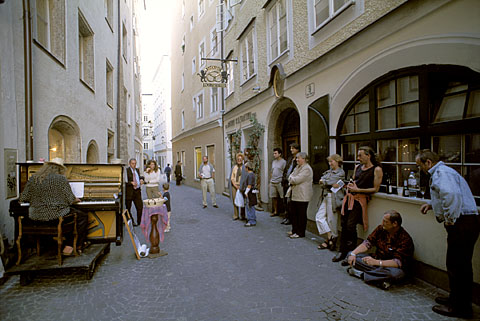 Salzburg ©2002 J.Crawford InterviewCars Are Driving Us NutsWe drive ever longer distances in order to satisfy the same needsAn interview with Hermann KnoflacherMartin Hablesreiter and Sonja Stummerer recently interviewed one of the leading traffic scientists, Professor Hermann Knoflacher. He has taught at the Institut fuer Verkehrsplanung und Verkehrstechnik at the Technische Universitaet in Vienna for more than 30 years. The 67-year-old professor became well known in Vienna for his innovative thinking on traffic issues. He developed pedestrian areas, put trams on separate roadways, and advocated a separate network of bicycle paths.Translated by Ulrich Nehls with help from Sarah Whelan in Galway, Ireland. Q: Are you opposed to the car? HK: I am not opposed to the car. But I am aware of its impact on our society. Q: Do you drive? HK: I don't own a car, but I drive occasionally. Q: So, what impact does motorization have on our society? HK: An incredible one. The car is like a virus that beds in your brain and totally subverts behaviour, values, and perception. A normal person would call our present living space completely insane. We move into sealed houses more or less voluntarily, with noise-protected windows and leave the outside to the noise, dust, and exhaust of the cars. That is a full reversal of values, and we don't even notice it any more. Q: In your opinion how did it come this far ? HK: Our problem is upright walking. We consume a considerable amount of muscle and navigation energy in order to stabilize our body. Just think of the coordination problems when under the influence of alcohol. When driving we use only one sixth of our energy and feel incredibly fast and powerful. That is one part. The other one is urban planning that requires cars to be as close as possible to all of our social activities. That's how you destroy the natural habitat, public transit, local supply, and eventually the social network that humans have established in millennia. Q: So the car destroys evolution? HK: No, but the human accomplishments of past generations have been degraded by the car. Q: Does the car era mean our cultural doom? HK: I wouldn't say that, since a cultural doom is not the real problem in my eyes. It's only the latest layer of evolution to get lost. The permanent structural devastation caused by the car is much worse. Q: Is driving addictive? HK: Definitely! The car takes possession of people. The driver is more distinguished from a human than any insect. Q: What do you mean by that? HK: Mobility with the own body is something common between humans and insects. However, a driver does not need this. And no insects destroy the living space of their successors for their own convenience, or move so fast that it could kill themselves. Q: In your opinion what should mobility in our society look like then? HK: Every society needs mobility to satisfy its needs. If we could meet our needs locally we would be plants, not humans. Human mobility always emerges from local shortcomings. Q: Why are we so proud of our mobility? HK: You are talking about technical mobility. In historic terms we never were especially proud of mobility. On the contrary: mobility has always been a ballast. Settling down means getting rid of enforced mobility. Our mental mobility was enough to allow us to cultivate plants or domesticate animals. Q: Is this why words such as gypsy or tramp are offensive? HK: It's clear: The settled community have claimed their territory and refuse access to anybody else. Settled residences are seen as exclusive. Travellers challenge the ownership of the land of the settled people and are thus hated for doing so. Q: You are both a critic of our traffic system and a planner. How does that work? HK: At the start of my career I discovered that traditional traffic planning is merely based on assumptions. For a long time there was no consideration for the consequences for the society or the environment. Nobody cared about noise or pollution, about fatalities, about the economy being altered or unemployment being created. My goal is traffic planning on a scientific basis. Under this aspect it is my opinion that transportation is one of the most fascinating scientific areas. Q: You criticize the lack of networking traffic planning with other scientific fields. HK: Yes. Core statements in transportation are completely wrong from my point of view! The idea of mobility growth depends on an inchoate reflection of the system. There was the assumption of rising mobility by rising motorization. Today we know that only the number of car trips rises, while the overall amount of trips remains the same, because the use of public transportation and walking decrease at the same time. The other false assumption is that of saving time by higher speed. There are many evaluations of economic efficiency in traffic planning based on this assumption. In fact there is no such thing as saving time by higher speed. You only travel longer distances in the same period of time. Q: How do you provide evidence for that? HK: By critically watching the human time budget. It's interesting how the period of time for daily mobility is almost the same around the globe. But distances travelled are different. In the Sixties the philosopher Ivan Illich showed that the amount of energy invested into cars and road infrastructure would be sufficient to cover the distance by foot - and in a considerably more beautiful and peaceful environment. Q: Doesn't social mobility increase when travelled distances increase? HK: No. Quite the contrary. The additional distance is useless. Man covers greater distances for the same purposes as before. He does what he has always done, but travels farther. Q: But we broaden our mind. HK: How can I broaden my mind when I rush through the environment at 100 km/hr? You are really constricting your mind due to the speed. Q: One experiences different things when travelling to India than to Bavaria. HK: It does not depend on where you travel, but what you discover there. You won't experience more on a worn-out tourist trail in India than in Bavaria. Quite the contrary, with watchfulness and curiosity you may discover things in Bavaria you won't find in India. Speeds that exceed our evolutionary grown capabilities also exceed our perception. Mentally we cannot cope with the distances we have learnt to cover using technology. Q: But we feel powerful. HK: Of course. Mobility always equals power. By the way, studies have revealed that parents don't even consider their own children when it comes to opting for a parking space close to their front door or a low traffic zone. Restricted mobility, even at the risk of ones own offspring are accepted in favour of a convenient parking space. Q: Is driving entirely insane? HK: Considering the prerequisites man has created for his car driving, it is clearly the most convenient form of travelling, and thus quite rational. Look at the pedestrian infrastructure in comparison. Footpaths in their present shape are a joke! In earlier days the pedestrian was allowed to use the entire expanse of a street - for more than 7.000 years! We have pushed the pedestrians aside on the edge in last 50 years and now ask ourselves why this kind of mobility vanishes. The structures we have created forces people to drive! Q: Are we living in a dictatorship of automobiles? HK: Absolutely! Q: Can this be changed? HK: Certainly. Changing the way of organizing parking space would be sufficient. If you would pass a public transport stop, or a store - which would establish by itself - on your way to a parking lot, the demand for driving would decrease. Now a days people are taunted by fiddling with symptoms. They tack on a little parking fee here and a little congestion charge there. That is completely unfair. At first they establish conditions requiring people to use a car, and then they make them pay for it. As a traffic planner you ought to create arrangements that unburden people from the necessity to drive! Q: That sounds like a conflict-laden job. HK: At that time, my proposal of turning the Viennese Kartnerstrasse into a pedestrian zone was predicted to lead to its economical death. Later I was told that cycling was totally unwanted by the Viennese and that speeding up public transit by laying cobblestones near the stops would cause motorist uproar. All that was allegedly unpopular. Yet the Viennese have embraced these ideas and the city's living standard rose in international rankings. You can't only satisfy voters wishes. You don't give drug addicts tax-free drugs, even though the desire certainly exists. Q: Could this problem, in your opinion, be solved with the gas price? HK: No! Every gas price rise is a purely symbolic action and automatically leads into a social trap. When only the wealthy can afford filling up and the poor don't, there is still an unsolved traffic problem, with a social injustice added to it. The approach must be parking and the way to it. When you organise parking space properly, carfree spaces with a high value of living will be created. Who wants to sleep quietly must accept a longer walk to his car. And who prefers the car must live in noisy and stinky environment. Parking lots should be organised the same way as transit stops. Q: Do you advocate more parking restriction? HK: Look how auto-centric you think! When a pedestrian is interdicted to cross a street where he likes that's seen as pretty normal. Rearranging traffic in motor streets and pedestrian streets is demonised as anti-car, without considering that dividing the streets offers the best solution. Q: What about the often-quoted freedom of the driver? HK: This freedom is purely virtual, merchandised by advertisement. They show an empty road in a beautiful landscape, with one single car running on it. Would they show the reality with gridlock, nobody would be dumb enough to buy a car. Q: Cars still sell very well. HK: Yes, because drivers enjoy yet another form of freedom, a freedom of lawlessness. Unlike other people, they are allowed to be noisy, pollute the environment, and jeopardise public safety unpunished. A rampaging drunk may be arrested due to disturbance; motorists annoying us with noise day and night are accepted. If I as a pedestrian would spray cancerous substances from a can that would be against the law. Motorists are doing just that, unresisted every day, shortening our life span on average by 12 months. Q: The car driver is a killer? HK: Yes, in good faith. The car shifts us into a space-time arrangement of irresponsibility that we cannot comprehend nor handle. And there is strong lobbying: the auto industry, the construction industry, and banks that give credits for purchasing cars, who at all costs take care that studies, like the one mentioned by the WHO, are not published. Q: Even teenagers are dreaming of cars. HK: Because they experienced bondage in cars for years. In a car a child is radically restricted in its mobility. He is forbidden to walk to or cross a street, he must not play everywhere, he is caged for hours in the rear of a car and is even belted. That's clearly why teenagers are looking forward to regain their freedom with a licence and a car of their own. Q: Do you think that cars are the cause of wars? HK: Absolutely! And you don't have to look at Iraq. There is a permanent war on our streets. Every single day two people are killed on Austrian streets. Traffic physically injures 40.000 people a year. And those dying from the exhausts, as reported by the WHO, aren't even counted in this figure. Q: What do you feel when you pass by suburban shopping centres, big box retailers, and the like? HK: These are parasites! I feel sorry for any city with such structures. The traffic problem is in part a child of these shopping malls and outlet stores on the edge of cities. The main problem is free parking. This ought to be taxed so massively that parking there would cost as much as in the city centre. Everybody should be allowed to build where they like, but in-town businesses struggling with parking fees while everything is free in the suburbs is unacceptable. Q: Do you expect European cities to look like those much ridiculed US cities, with sprawling suburban homes, giant shopping centres, and poor public transit? HK: No, since there is a re-urbanisation taking place in many European cities. That is related to an ageing society. Elderly people just cannot get the needed services on the edge of a city. They simply have to move back into the city. Apart from that it's the energy issue that will make people move back into the cities. Q: You mean gas prices? HK: No, I mean energy prices in general. They will definitely rise and affect all areas of life. This means heating, electricity, transport - and all that carries more weight in the isolation of a suburban home than in a city centre. And elderly people need a lot of energy-rich services that become very expensive at price hikes. I don't just think of "meals-on-wheels" and the like. The more scattered people live, the more energy is needed. And we won't be able to afford that any more within a short period of time. This means we will have to create sustainable urban structures in order to be able to pay for them in the future. The actual cities with their suburbs aren't like this. Q: Is it true that societal expenses of mobility are higher than the revenues, including employment in the car industry? HK: That's absolutely correct. And the bill for consumers will become worse, since at the moment mobility is more or less free, and that is soon going to change drastically. Q: Why is air travel so strongly criticized these days, in regards to climate protection and mobility, and not motorists? HK: First of all, the damaging impact of air travel is serious and criticism is justified. No-frills airlines are activating groups of passengers that would not fly otherwise. Flying basically is the most degrading mode of travelling. Flying always reminds me of mass animal farming: Like chickens, fed like in battery farming. But unlike the humans in an aircraft chickens are not belted.
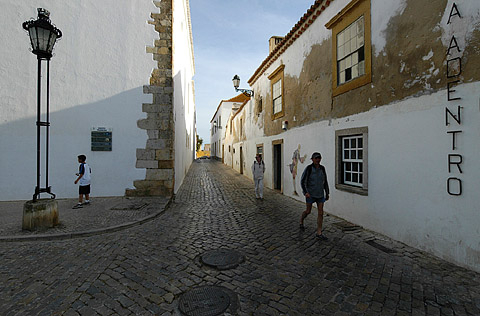 Faro, Portugal ©2005 J.Crawford
Books & Films
This zero-budget film tells the story of a 500-mile bike caravan from Hannover, Germany, to an IMF/World Bank gathering in Prague in 2000. A group committed to non-violence and consensus-based decision-making set out on an anti-globalization odyssey. A great number of obstacles are overcome by a group that maintains its good spirits even in the cold rain. The authorities clearly don't know what to make of the group, and their confusion is reflected in erratic reactions to the group. I found it interesting to see that the consensus-based decision-making process worked well (if rather slowly). It seems appropriate in an environment when anyone might face arrest at any time, and so everyone should have a direct voice in decisions regarding strategy and tactics. However, when faced with the need for quick decision-making at the Czech border, the limitations of consensus-based decisions became apparent. (This is why ships are run by captains and not by committees.) The group finally gets to Prague and joins the huge protests in progress. These protests were not entirely non-violent, although the question remains whether or not police agitators were employed to start violence and discredit the protests. Ultimately, 800 arrests were made, some apparently with considerable violence on the part of the police. Some local residents came to see the protestors as "just hooligans," which does bring into question the effectiveness of these kinds of tactics. The caravan and the protests highlight some of the big choices the world must make in the years ahead. It also raises the big question: Why is it that they are they so afraid of us? The film is made with a deft touch and a good eye. The technical shortcomings of a hand-made film do not detract from its message. View the trailer [Flash!].
See the initial review. The revised edition (now subtitled "Towards a New Pedestrianism" instead of "The Labors of Michael E. Arth") addresses some criticisms I made of the first version. The film is now a quarter-hour shorter, and the editing is tighter. This is a truly inspiring story, and the film deserves distribution. Please contact the producer if you can help with this.
 Venice ©2001 J.Crawford Hot New LinksThe links below will open in a new browser window:
Cycling in Hanoi: Can the Past Become the Future? by Debra Efroymson Street Closures and the Battle of Prince Street by Graham T. Beck Carfree Life: Discover how losing your car will improve your life. . . At the Frontiers of Cycling: Policy Innovations in the Netherlands, Denmark, and Germany [PDF!] from WTPP A residentís Guide for Creating Safe And Walkable Communities [PDF!] from the US Dept. of Transportation. Despite the source, this is worth a look. Building Sustainable Transport into New Developments: A Menu of Options for Growth Points and Eco-towns [PDF!] From the UK Department of Transport. Putting Pedestrians First! [AVI!]
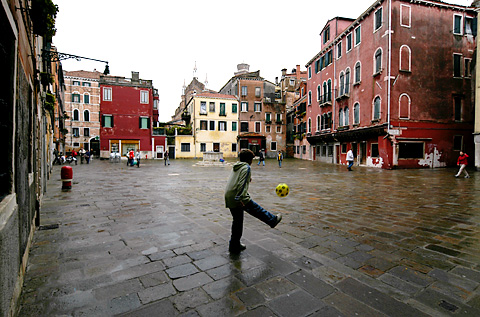 Venice ©2005 J.Crawford About Carfree Times
Next Issue
Subscribe to Carfree Times
Write for Carfree Times
|
| Editor | J.H. Crawford |
| Send e-mail | |
| URL | http://www.carfree.com/
|
![]()
Back to Carfree.com
Carfree Times Home
Back to Carfree Times Issue 49
Forward to Carfree Times Issue 51
About the book: Carfree Cities
E-mail
carfree.com
Copyright ©2008 J.Crawford



